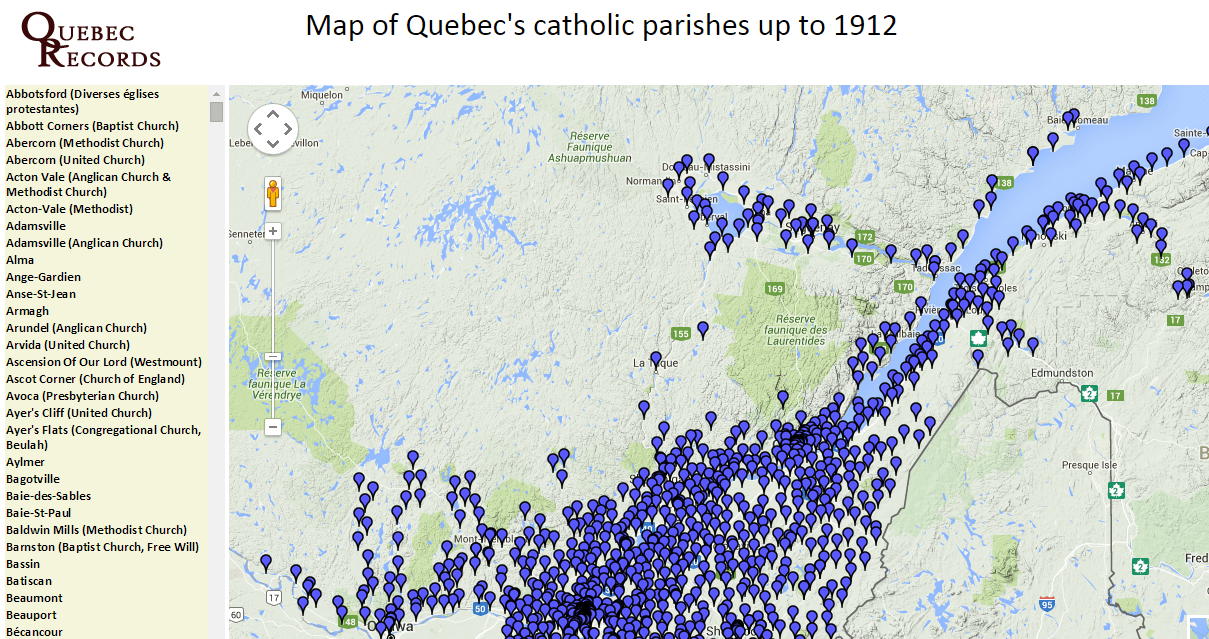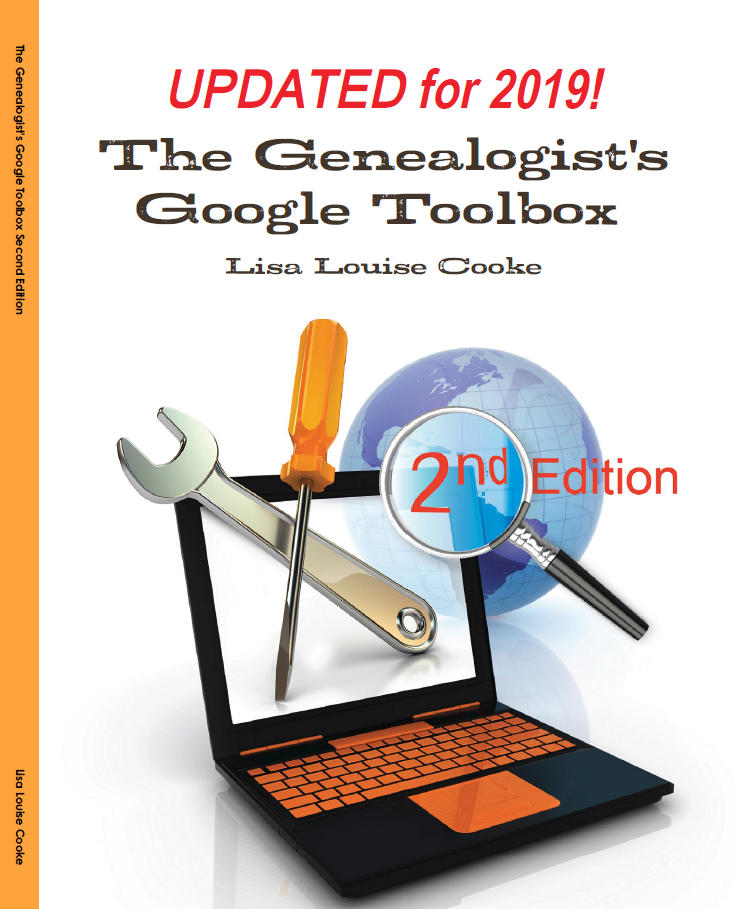Blog

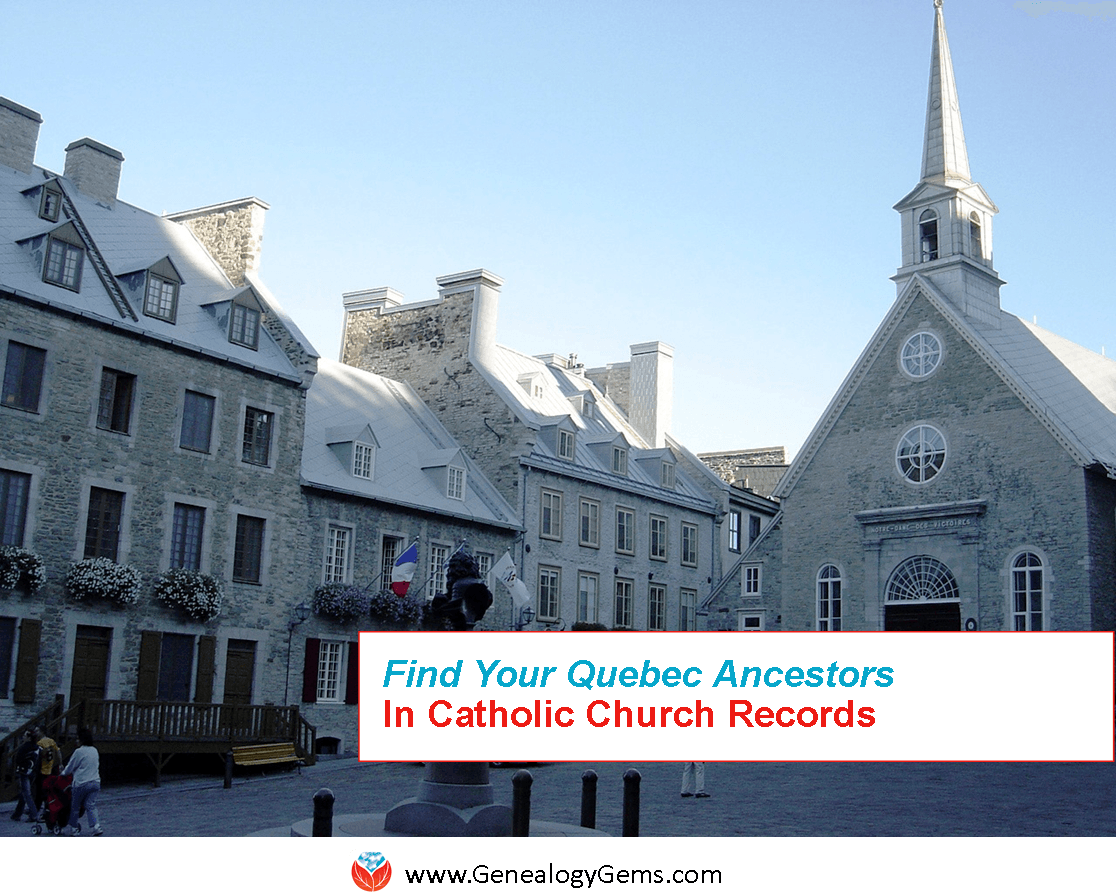
Here’s Why Quebec Church Records are a Great Place to Look for Ancestors
Do you have ancestors who lived in the earlier days of Quebec, Canada? Catholic church records may prove some of your most consistently helpful resources! Read about how to tap into these great resources online, going back as far as the 17th century, to uncover your Canadian family history.
Those tracing their ancestors in Quebec can encounter serious frustrations! The same 50 given names appear for 70% of the people before 1800 (and many share the same surnames, too). Almost all passenger lists are missing before 1865. Several early censuses are not easily searchable online.

Thankfully, in Quebec church records are often available back to the 1600s. There are LOTS of them online, and they often contain the distinguishing details–those exact dates, names, relationships and locations–that can help identify an ancestor with greater certainty.
- Catholic Parish Registers, 1621-1979 on FamilySearch
- Quebec Vital and Church Records, 1621-1968 on Ancestry (subscription required)
- Parish censuses were also taken in various years in Quebec. Click here to learn more about them.
I also recommend exploring this excellent website for Quebec genealogy: Quebec Records: The Genealogical Website of French America
More Canadian Genealogy Gems Right Here at Genealogy Gems
- Canadiana: Digital Archive and Portal to the Past
- Amazing Family History Find in a Basement: Canadian Navy WWI Memories
- Google Earth for Canada and Genealogy
Plus get inspired by this Family History Video about the Cooke family’s immigration to Canada! You can make videos just like this using Animoto. It’s incredibly easy! Click here for step-by-step instructions.
Disclosure: This article contains affiliate links and Genealogy Gems will be compensated if you make a purchase after clicking on these links (at no additional cost to you). Thank you for supporting Genealogy Gems!
This article was originally published on October 6, 2015 and updated on April 8, 2019.
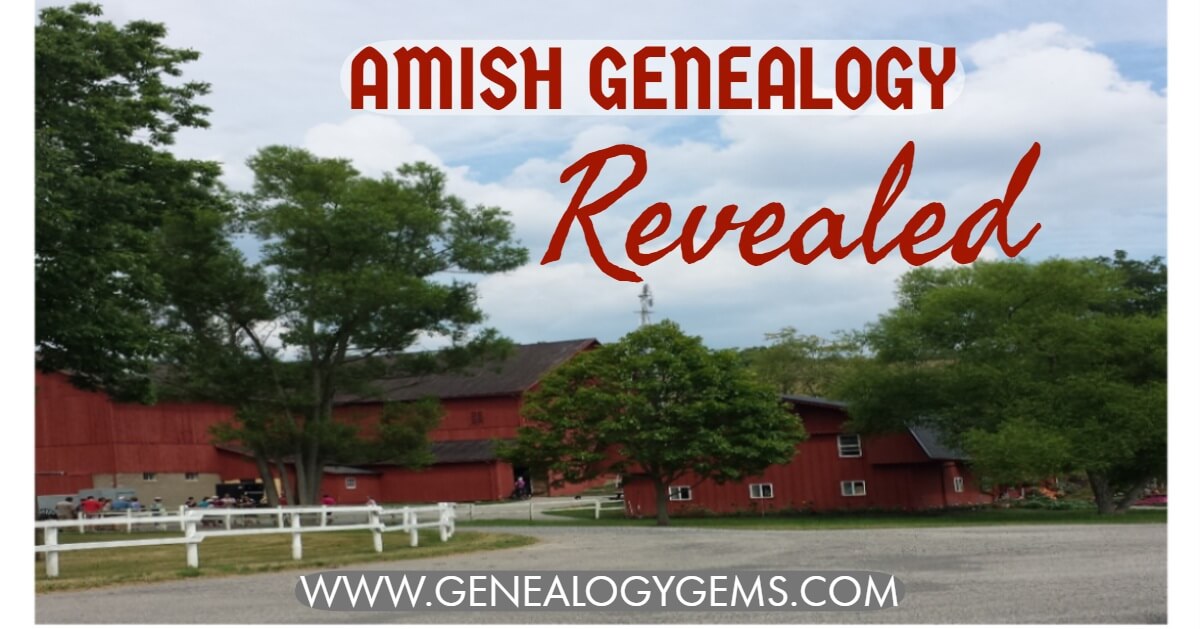
Amish Genealogy Revealed
Amish genealogy is revealed with Facebook! Well, sort of.
I made a recent visit to Amish country and I couldn’t resist talking genealogy with my new friends. I learned a lot about resources for family history and gained invaluable insight that I’m here to share with you. If you have Amish or Mennonite heritage in your family history, you won’t want to miss this amazing information!

The Amish Facebook Equivalent: The Budget
The Budget is the Amish newspaper our guide wittily referred to as “Amish Facebook.” However, this Facebook alternative has been around since 1890! The Budget covers news from all over the United States and Canada pertaining to the Amish and Mennonite communities and families. Who just got married, who had a baby, and who recently passed away…it’s all in there!
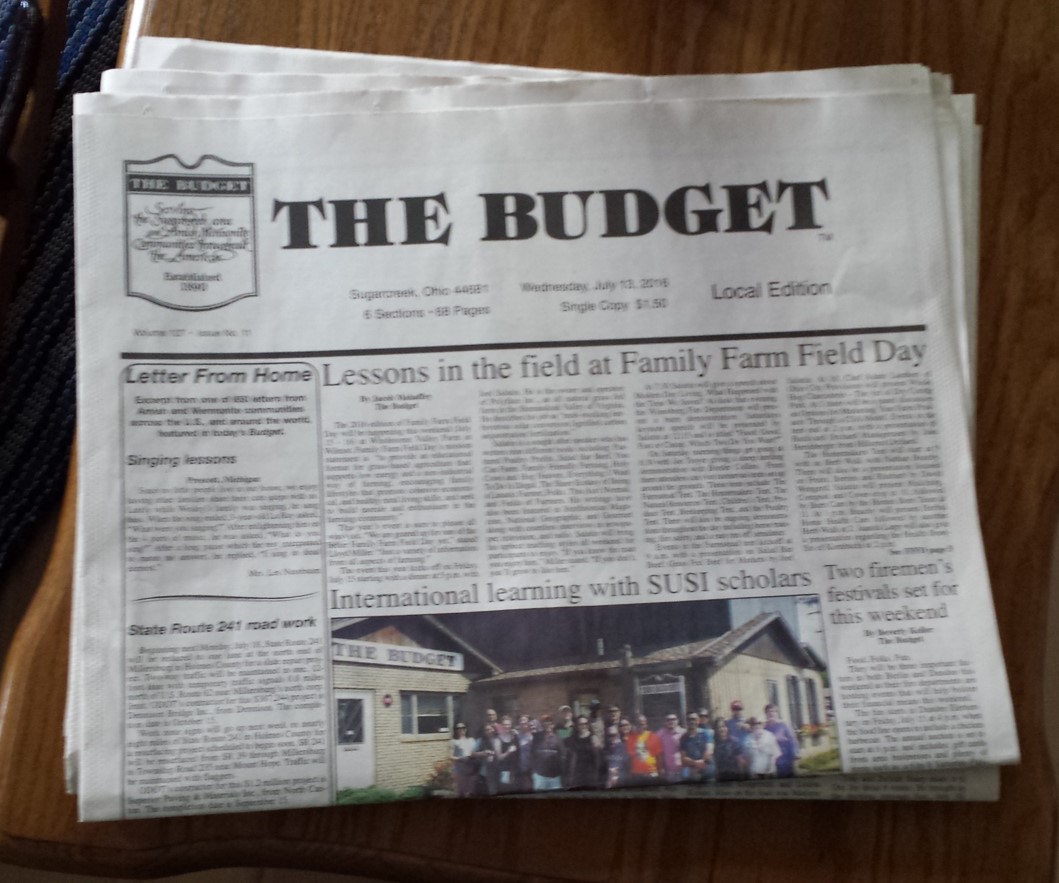 Each weekly edition comes out on Wednesday and the cost is $1.50 per paper. However, you can save by signing up for a 6-month, 1-year, or 2-year subscription. They have local and national editions and you can check out all the subscription prices at their website here.
Each weekly edition comes out on Wednesday and the cost is $1.50 per paper. However, you can save by signing up for a 6-month, 1-year, or 2-year subscription. They have local and national editions and you can check out all the subscription prices at their website here.
Local public libraries in the area may have copies of The Budget in their archives or on microfilm. Be sure to call the library and speak with someone in the history or genealogical department to determine what is available.
You may be thinking, “Wait a minute. I didn’t think the Amish liked having their pictures taken.” But you will actually find many nice pictures in The Budget. I learned not all Amish and Mennonite’s have the same rules about photography. Often, rules about photography, clothing styles, and even the types of dolls a child has are determined by the Bishop and church leadership of that district.
I was delighted to also learn The Budget has its own traditional Facebook page, too, where I could keep up with some of the local news.
The Amish Church Directory
The Amish churches are divided into districts. A district may cover more than one county. They are not necessarily based on county or town borders, but rather encompass about 50 families in a given vicinity.
Most Amish families are listed in a church directory for their area. Not all districts find a directory “important,” said my guide.
My new friend at Yoder’s Amish Farm also shared with me the genealogical value of such a directory. He said the directories came out “most every year” in his district, though not all districts publish yearly. By using the directories for any given district, you could easily piece together a very accurate family genealogy.
The directories are listed by surname of the head-of-household. Each family listing includes their home address, which is particularly helpful to the many local government agencies, my guide mentioned. Each member of the family is listed by first name and birth date.
Marriage dates and death dates, if applicable, are also included. If there has been a second marriage involved due to widowhood, the deceased spouse and the couple’s children are also listed. Maps are also found in the church directory so you can keep track of where all the cousins are living!
Directories can be purchased by anyone and are often found at local dry-goods stores within the communities.
Amish Genealogy Family History Books and Newsletters
You may be interested to know that many family history books or published newsletters exist for Amish family genealogies. You will most likely find these books and newsletters at a local library. Sometimes, they are available to purchase from local dry good stores in the area.
Even better yet, try Google! I Googled Amish Yoder Family History and learned about the Oregon Mennonite Historical and Genealogical Society newsletter. It was packed with great information!
The large bound volumes of Amish genealogy may hold thousands of names and dates. Many begin with a detailed history of who came to America, or who came to a given state or area. Then, it will map out for you the family branches.
Using a few of these wonderful sources may help you trace your genealogy farther than you ever imagined. Happy hunting, friends!
Discover even more ancestors with Google!
To learn more amazing techniques about using Google for your genealogy research, check out Lisa’s The Genealogist’s Google Toolbox, available in the Genealogy Gems store.
The update includes corrected links and resources to replace any outdated or defunct information. You’ll learn more about all the Google tools you need to master to aid you in your family history. Better yet, after you learn how to use these tools for family history research, you’ll find yourself using them to find all kinds of things!
This article was originally posted on August 29, 2016 by Amie Tennant. It was updated on April 5, 2019.

Find Ancestors in These New Genealogy Records Online
A brand new vital records collection is available online now for Ontario, Canada!
The Ontario Genealogical Society’s new database is available at Findmypast, along with exclusive Parish Registers for Kent, England.
Ancestry.com also has a new collection of Parish Registers for Cheshire, England.
Finally, you can explore a new index of Ohio WWI Statement of Service Cards. As a bonus, watch our special interview with the CEO and the VP of Findmypast about family trees, unique collections, and more.
Featured: Genealogical records for Ontario, Canada
The Ontario Genealogical Society has created a database of vital records, which are now available at the Genealogy Giant records website Findmypast! The Ontario Genealogical Society Provincial Index is a compilation of announcements found in Canadian publications. You may find out your ancestor’s death date, burial date and place, as well as the names of your ancestor’s parents, children, and spouse.
With every result, you will be presented with a transcript featuring the vital details found in a Canadian publication. The records mostly comprise obituaries, but you will also find birth and marriage announcements. Details might include:

- Name
- Event year
- Death year
- Periodical
- Publication year
- Publication date
- County
- Province
- Country
- Notes – this is the most valuable field. It will provide nearly the full text of the announcement as it appeared in the publication. This may provide you with details about the person’s death, burial place, next of kin, parent’s names, children’s names, and more.
WWI Military Records
Next, we head over to FamilySearch, where a new collection of Ohio, World War I Statement of Service Cards, 1914-1919 has been added. This collection contains an index and images of statement of service cards for Marine Corps, Navy, and out of state enlistments which was provided for by an act of Congress July 11, 1919.
- Name
- Age at enlistment
- Race
- Home address
- Location where enlisted
- Rating (Rank)
- Service number
- Date of discharge
The image below is an example of a Marine Corps Service Card, 1917 courtesy of FamilySearch.org.

England Parish Registers
Also added this week at Findmypast are new and exclusive Parish Registers from Kent. “The new records have been created from over 3,000 handwritten registers currently held at the Kent History and Library Centre in Maidstone. These registers, covering hundreds parishes across the county, have been scanned and digitised in full colour to ensure the highest possible image quality.
Over 2.6 million fully indexed baptism, banns, marriage and burial records spanning more than 400 years of Kent history are now available to search online exclusively at Findmypast.”
Over at Ancestry.com, there’s a new collection of Cheshire, England, Parish Registers, 1538-1909. From the description:
“Parish records are the best source of vital record information before Civil Registration began in 1837. Both the British government and the church had an interest in record keeping, and a 1538 Act of Parliament required ministers in the Church of England to record baptisms, marriages, and burials. This database includes records with dates ranging from 1538 up until 1812, after which George Rose’s Act called for preprinted registers to be used as a way of standardizing records.
Also note that marriage records were to be kept in a separate register starting in 1754, so they may not be included in this database.”
More to learn about Findmypast.com and FamilySearch tree synchronization
In the exclusive video interview below, Tamsin Todd, CEO and Ben Bennett, Executive Vice President at Findmypast.com provide the answer to the question, “Will or does Findmypast have a family tree?”
They also talk about the new Travel & Migration records, and the Suffragette Collection.
If you have ancestors from the United Kingdom and the Republic of Ireland don’t miss this interview by Sunny Morton, author of “Genealogy Giants – Comparing the 4 Major Genealogy Records Websites” quick reference guide.

Lacey Cooke
Lacey has been working with Genealogy Gems since the company’s inception in 2007. Now, as the full-time manager of Genealogy Gems, she creates the free weekly newsletter, writes blogs, coordinates live events, and collaborates on new product development. No stranger to working with dead people, Lacey holds a degree in Forensic Anthropology, and is passionate about criminal justice and investigative techniques. She is the proud dog mom of Renly the corgi.
Disclosure: This article contains affiliate links and Genealogy Gems will be compensated if you make a purchase after clicking on these links (at no additional cost to you). Thank you for supporting Genealogy Gems!


